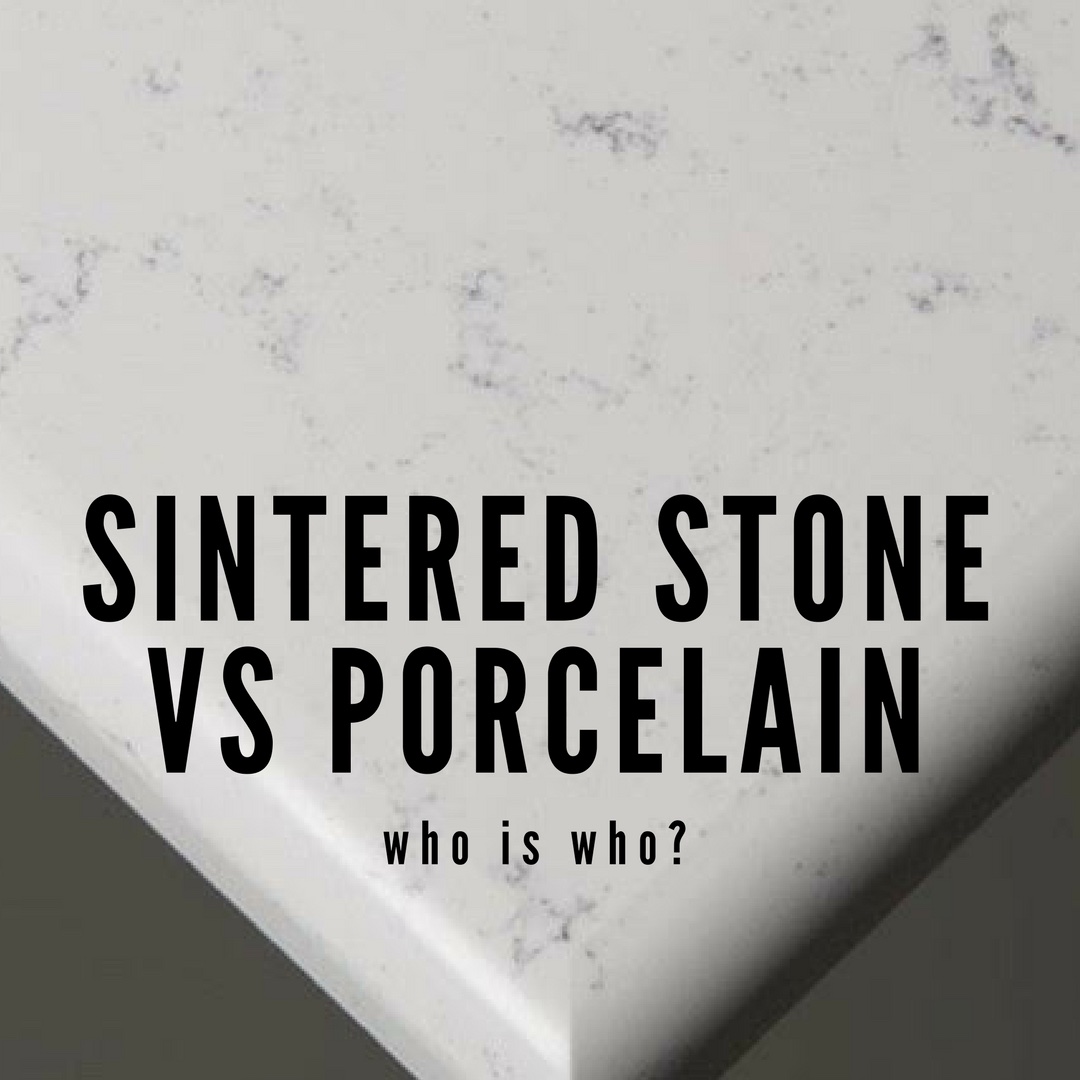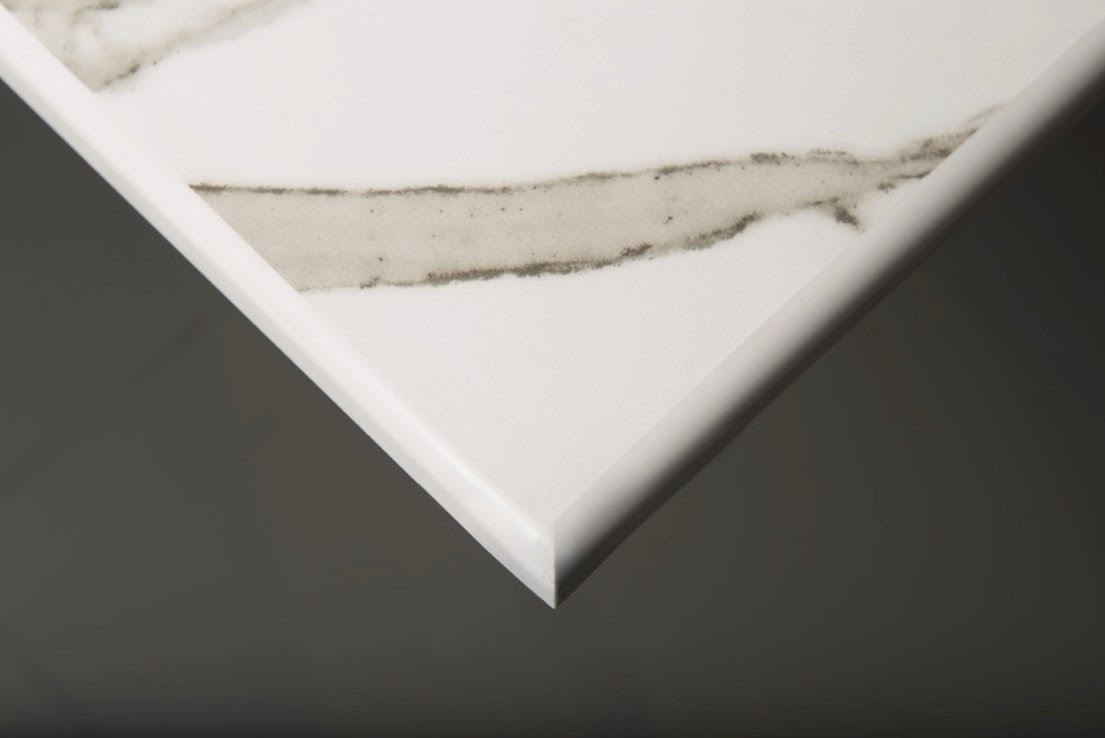Is Sintered Stone the Same as Porcelain Tile?
This blog was published first on Cara Green

Recently, a new category of surfacing materials hit the market and represents what is truly next in engineered surfacing: sintered stone. “Sintered Stone” is the moniker firms like Lapitec, Laminam and Neolith have chosen to differentiate their products from traditional quartz materials.
These products are superior in a myriad of ways:
They are stain resistant, scratch resistant, as well as heat and frost resistant.
They are ideal for outdoor use and do not fade or yellow like other materials, they can be used as exterior cladding, and in some cases reduce air pollution. They are incredibly hard and impenetrable.
Where does the water get muddied with these cutting-edge materials? The word “porcelain.”
Why the confusion? Both Porcelains and Sintered Stones are “heated” – the definition of sintered – just prior to the point of liquefaction and then cured into their slab or tile format. The major difference is what these processes were designed for.
Seeing the success of these new entrants, traditional porcelain companies that focused on smaller format tile realized they, too, could move in on the cladding and larger format surfacing market. So they started scaling up their manufacturing lines to get larger size tiles that, while thin and more brittle, were technically suitable for horizontal surfacing and some vertical applications.
Sintered stones, though, were designed for surface applications. Designed to be 1-3cm thick, they are a perfect swap for traditional stone designs like quartz and granite but with far superior performance.
Evolution of Design
Porcelain tiles have been around for ages. Typically 3-6 mm thick, these materials have surface designs that adorn them, historically handcrafted, but often machine printed these days and can be tailored to any specific aesthetic need. The pattern is surface printed only, or even glazed. These tiles have recently been scaling up to address more modern applications where seams and grout lines are not desired. The larger the tile, the more fragile, and most processes are not designed with thicker profiles in mind, and are limited to the 6mm thickness.

Sintered stones, or ultra-compact stones, are new to the market, really ramping up in the last couple years.
They are seen as viable replacements for the fatigued quartz market, which has seen its luster fade as Chinese entrants flood the market with cheap alternatives, pushing the price down and confusing the industry.
Sintered stones build on the benefits of quartz, but remain a patent-protected process technology in some cases, locking out the Chinese equipment manufacturers from mimicking the process, which is largely what led to the commoditization of quartz. Sintered Stone is positioned to be the “next hot thing” in kitchen remodels, as well as the go-to standard for self-cleaning buildings and cities that are really planning for the future.
What About Aesthetics?
The upside of porcelains tiles and TPT (thin porcelain tile) manufacturers is that you can print any design you desire on the surface of the material. The problem is the edges don’t match the top when you surface print, so you are limited to having a somewhat unmatched look (see the above picture).
Some sintered stone manufacturing designed for through-body patterning, so that the edges match the surface and are inherent to the body of the material. This allows a countertop to have an edge pattern that matches the surface, not making it look like an unfinished laminate without edge banding.
The other option for porcelains is to miter the edge, but this, too, can cause issues with matching the pattern on the surface to that on the edge correctly.
Sintered Stones were designed with texture in mind over printed pattern. Designers are clamoring for texture and feel, really connecting with their clients and engaging them in their spaces, so incorporating texture was paramount to sintered stone companies. Rough, lava-stone like textures, to smooth, silky finishes and everything in between was part of the manufacturing design, not an afterthought.
Since sintered stones and porcelains are both mineral based in their natural form and color (besides printing), they are organic, neutral, and pleasing in natural and organic design.
What About the Environment?
Sintered Stone manufacturers did not turn a blind eye to trends in building. Launched in Europe, many of these companies are the bellwethers of the environmental movement. They built sustainability into their brand: their manufacture, their recyclability, their reclamation processes and the durability and performance of their products.
Porcelain tile was designed at a time when look was the thing. Sintered Stones were launched when performance, health, and the environment were paramount.
Break it Down for Me
Sintered Stone hit the surfacing market as the next, higher performing man-made material.
Porcelain manufacturers said, “Hey isn’t that just thicker, through-color, through-pattern porcelain?”
Porcelain companies made their centuries-old tiles larger and targeted the same market.
Sintered stone has superior performance and was designed for surfacing applications.
Sintered stone has inherent textures.
Sintered stone has through body colors and patterns.
Sintered stone is thicker – 1, 2 and 3cm, just like granite, marble and quartz.
Thin Porcelain Tiles (TPT) – the name says it all – thin means brittle, handle with care. Sintered Stone means stone, the market that it wants to move into.
Many of the innovators behind sintered stone are quartz experts. They considered their product and said, “How can we make this better?” Then they did. With millions of investment dollars, they created the sleek, modern aesthetic of sintered stone. Centuries-old porcelain technology wanted to come along for the ride, but the reality is enough to shed light on the true innovator.
Don’t be fooled into thinking that a big tile is a suitable surface, it has to be perfectly flat, perfectly handled, substantially supported and uniformly installed, or it will fail.
Sintered Stone started out true to what it wanted to be. The next generation of surfacing, outperforming all those that came before it. Incorporating superior performance, spanning countertop thickness to exterior cladding design, beautiful colors, through body patterns, and feel-me textures.
Touch it, see it, experience it, and make sintered stone your own healthy space.
